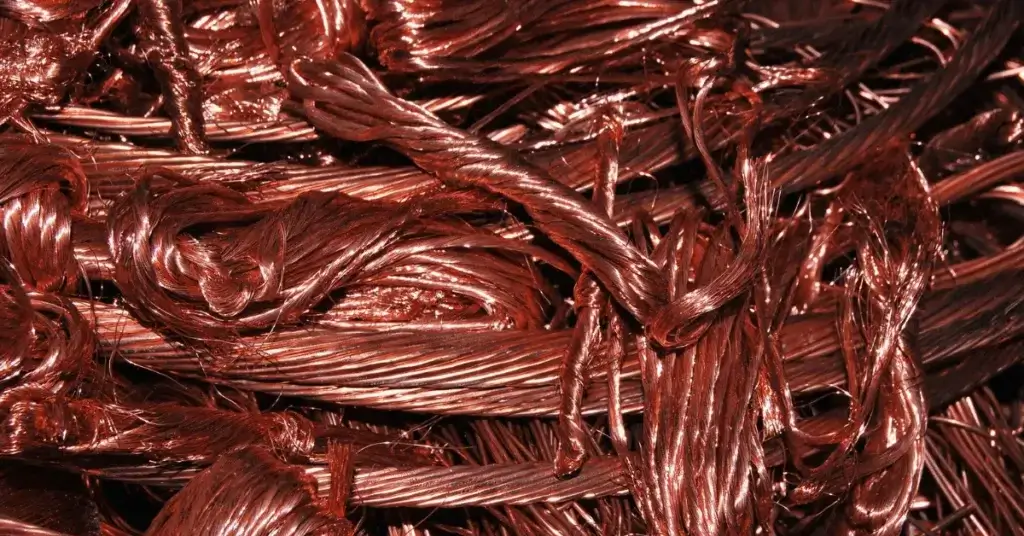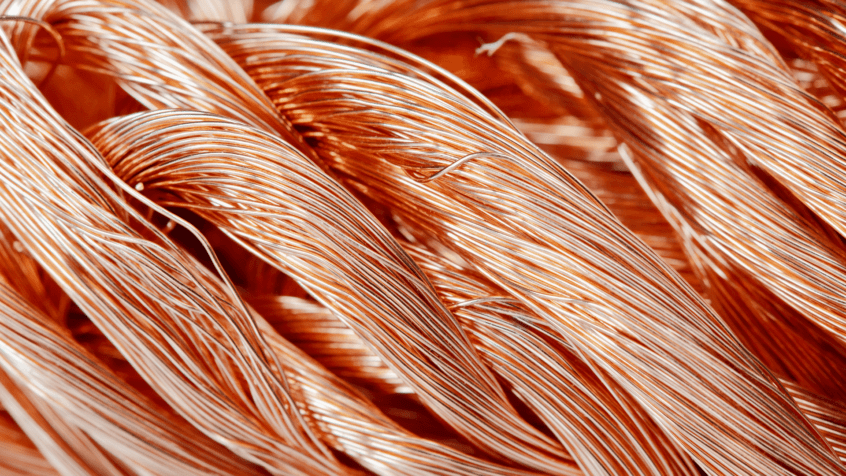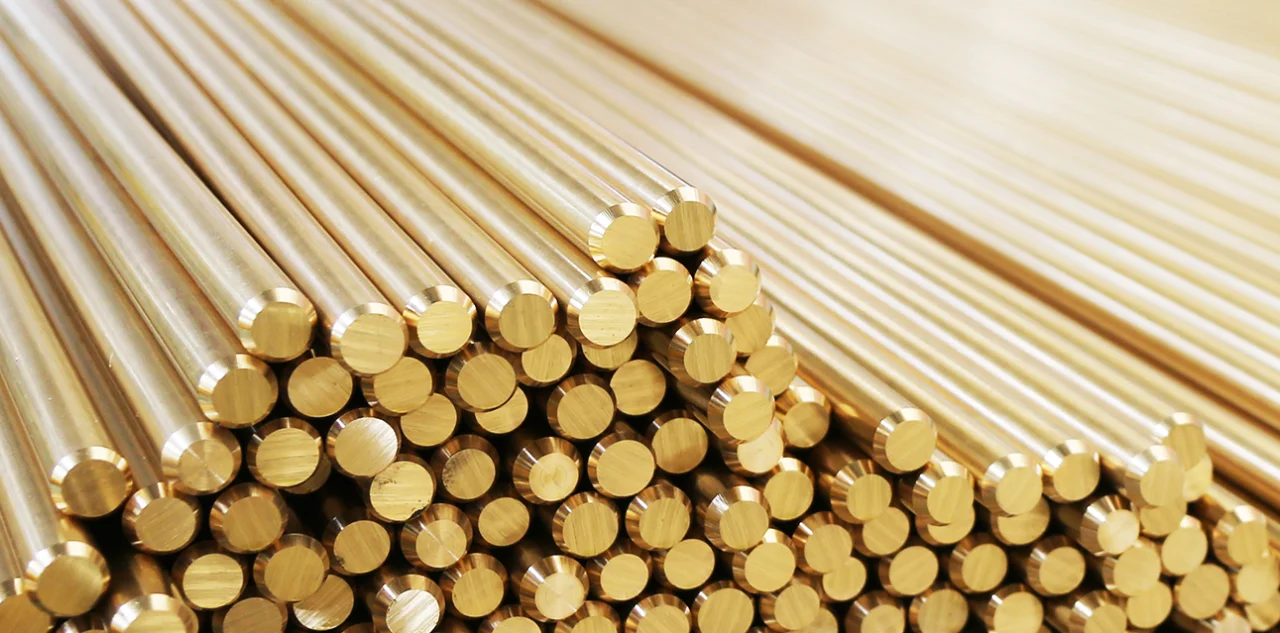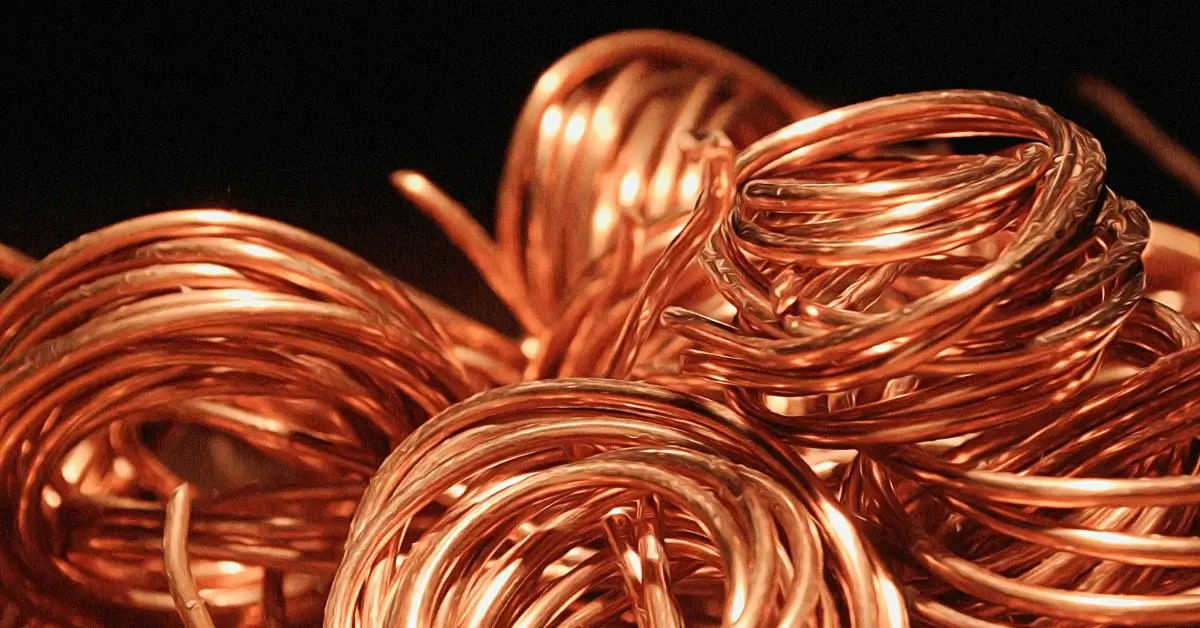Brass and copper are both excellent conductors of electricity, but they have some distinct differences in terms of their electrical conductivity. The key distinction lies in the alloy composition and properties of the specific type of brass, in this case, C72900.
Copper is renowned for its outstanding electrical conductivity, making it one of the most common materials used in electrical applications. It has a high electrical conductivity rating, typically around 58 to 62 million Siemens per meter (MS/m). Copper’s superior electrical conductivity ensures minimal resistance to the flow of electric current, making it an ideal choice for electrical wiring, power transmission lines, and various electrical components.
On the other hand, brass, which is an alloy of copper and zinc, does not exhibit the same level of electrical conductivity as pure copper. The conductivity of brass, including C72900, can vary depending on its exact composition, but it generally has lower electrical conductivity than pure copper. This is because the introduction of zinc into the alloy structure reduces the overall electrical conductivity. While brass is still a decent conductor of electricity, it is often chosen for applications where both electrical conductivity and other properties, such as corrosion resistance or aesthetics, are important.
The main difference between brass (specifically C72900) and copper conductivity lies in their composition. Copper has higher electrical conductivity due to its purity, while brass, being an alloy, has lower electrical conductivity due to the presence of zinc or other alloying elements. The choice between brass and copper for electrical applications depends on the specific requirements of the application and the balance of electrical properties, cost, and other factors.
Conductivity: A Key Property in Metals

Conductivity: A Key Property in Metals
Conductivity is a fundamental property of metals that plays a pivotal role in their various applications across industries. It refers to a material’s ability to conduct electrical current, and in metals, it is characterized by the movement of free electrons within the atomic lattice structure. Conductivity is a key property because of its widespread implications in fields ranging from electrical engineering to metallurgy.
In electrical engineering, high conductivity is highly desirable as it reduces electrical resistance, minimizing energy loss and ensuring efficient transmission of electricity. Copper, due to its exceptional electrical conductivity, is often the material of choice for electrical wiring, power cables, and conductive components in electronics. This property also makes copper ideal for busbars and electrical connectors, where the efficient flow of electricity is critical.
Conductivity is not limited to electrical applications; it also extends to thermal conductivity. Many metals with good electrical conductivity, such as copper and aluminum, also exhibit high thermal conductivity. This makes them excellent choices for heat exchangers, radiators, and other applications where efficient heat transfer is essential.
Furthermore, in fields like metallurgy and materials science, understanding and controlling the conductivity of metals is crucial for tailoring their properties. Alloying metals with other elements can alter their conductivity, allowing engineers and scientists to customize materials to meet specific requirements. In summary, conductivity is a key property in metals that underpins their utility in numerous technological and industrial applications, making it a crucial consideration when selecting materials for various tasks.
Copper Conductivity: The Benchmark Standard
Copper conductivity serves as the benchmark standard for electrical conductivity in the realm of metals. Copper is renowned for its exceptional ability to conduct electricity, and it is often used as a reference point when comparing the conductivity of other materials. This remarkable conductivity arises from the unique atomic structure of copper, where its outermost electron orbits can easily move throughout the lattice of copper atoms.
The electrical conductivity of copper is exceptionally high, with typical values ranging from 58 to 62 million Siemens per meter (MS/m). This places it at the forefront of materials used in electrical engineering, power generation, and transmission. Copper’s low electrical resistance ensures minimal energy loss during the transmission of electrical currents, making it the preferred choice for wiring, power cables, electrical connectors, and a wide range of electrical components.
Moreover, copper’s high thermal conductivity complements its electrical conductivity, making it valuable in applications where efficient heat transfer is crucial. It is used in heat exchangers, radiators, and other cooling systems where rapid dissipation of heat is essential for maintaining equipment reliability and performance. Overall, copper conductivity’s status as the benchmark standard underscores its critical role in modern technology and industry.
Brass Conductivity: How Does It Compare?

Brass Conductivity: How Does It Compare?
Brass, unlike copper, is an alloy composed primarily of copper and zinc, with the addition of other alloying elements in some cases. Brass conductivity, while respectable, is generally lower than that of pure copper. The introduction of zinc into the alloy structure reduces the overall electrical conductivity of brass. The exact electrical conductivity of brass can vary depending on its composition, with different brass alloys exhibiting varying levels of conductivity.
Typically, brass has an electrical conductivity ranging from about 15 to 40 million Siemens per meter (MS/m), which is significantly lower than the conductivity of pure copper. This lower conductivity makes brass less suitable for applications where the efficient flow of electricity is paramount, such as electrical wiring or power transmission lines. However, brass’s electrical properties are still sufficient for many other applications.
Despite its lower electrical conductivity, brass offers advantages in other areas, such as corrosion resistance, machinability, and aesthetic appeal. Brass is often chosen for applications where both electrical properties and these other characteristics are important. For instance, it is commonly used in plumbing fittings, musical instruments, decorative hardware, and architectural elements. In these cases, the balance between electrical conductivity and other qualities makes brass a versatile and valuable material.
Composition Matters: The Role of Zinc in Brass
The role of zinc in brass is pivotal and central to its properties and characteristics. Brass is an alloy primarily composed of copper and zinc, with varying amounts of each element influencing its overall properties. The amount of zinc in the alloy has a direct impact on several crucial aspects of brass, including its mechanical properties, corrosion resistance, and electrical conductivity.
The addition of zinc to copper creates a material with improved strength and hardness compared to pure copper. The alloy’s mechanical properties, such as tensile strength and hardness, can be tailored by adjusting the zinc content. This makes brass versatile for a wide range of applications, from soft and malleable forms suitable for decorative elements to harder, more durable forms used in engineering and manufacturing.
Additionally, the zinc in brass contributes to its corrosion resistance. Brass has a natural ability to resist corrosion in various environments, and this resistance can be further enhanced by modifying the alloy composition. Brass is often chosen for applications where exposure to moisture or corrosive substances is a concern, such as plumbing fixtures and marine components.
However, as discussed earlier, the presence of zinc in brass comes at the expense of electrical conductivity. While brass is a conductor of electricity, its electrical properties are generally lower than those of pure copper due to the alloying with zinc. This trade-off between mechanical strength, corrosion resistance, and electrical conductivity highlights the importance of understanding the role of zinc in brass and choosing the appropriate brass alloy for specific applications based on these factors.
Electrical Conductivity of Copper: High Purity Advantage

Electrical Conductivity of Copper: High Purity Advantage
The electrical conductivity of copper is exceptionally high, primarily due to its high purity. Copper is known for its excellent electrical conductivity, and this property is directly linked to its atomic structure. In a pure copper lattice, the outermost electron orbits are relatively free to move throughout the atomic structure. This free movement of electrons allows for efficient and unimpeded flow of electrical current, resulting in low electrical resistance.
High-purity copper typically boasts an electrical conductivity of approximately 58 to 62 million Siemens per meter (MS/m). This places pure copper at the forefront of materials used in electrical engineering and various industries. It is the standard by which other materials are often compared when assessing their electrical conductivity.
The high electrical conductivity of pure copper is advantageous in numerous applications. It is commonly used in electrical wiring and power transmission because it minimizes energy loss as electricity travels through conductors. Additionally, copper’s excellent conductivity is essential in various electronic components, such as printed circuit boards and connectors, where efficient electrical conduction is vital for device performance. In summary, the advantage of high purity contributes significantly to copper’s remarkable electrical conductivity, making it an essential material in the field of electrical engineering and technology.
The Impact of Alloying on Brass Conductivity
The electrical conductivity of brass is significantly influenced by the presence of alloying elements, most notably zinc. Brass is essentially a copper-zinc alloy, and its electrical properties are a result of the combination of these two metals. The impact of alloying on brass conductivity can vary depending on the exact composition of the alloy.
The addition of zinc to copper reduces the overall electrical conductivity of brass when compared to pure copper. This is because the introduction of zinc atoms disrupts the regular copper lattice structure and hinders the free movement of electrons. The degree to which electrical conductivity is reduced in brass depends on the percentage of zinc in the alloy. Brass alloys can vary widely in composition, with some having higher zinc content and others having less, leading to a range of electrical conductivities.
While brass generally has lower electrical conductivity than pure copper, it is important to note that brass still remains a decent conductor of electricity. Its electrical properties make it suitable for a wide range of applications where electrical conductivity is not the primary concern. Brass is often chosen for its combination of attributes, including corrosion resistance, machinability, and aesthetic appeal, making it valuable in applications such as plumbing fittings, musical instruments, and decorative hardware. The impact of alloying on brass conductivity highlights the versatility of this material and the ability to tailor its properties to meet specific application requirements.
Thermal Conductivity: Comparing Brass and Copper

Thermal Conductivity: Comparing Brass and Copper
Thermal conductivity is another essential property that distinguishes brass and copper, and it provides valuable insights into their performance in heat-related applications. Copper is well-known for its exceptional thermal conductivity, making it one of the best heat conductors among common engineering metals. Its high thermal conductivity, typically around 398 watts per meter-kelvin (W/m·K), means that copper efficiently conducts heat, making it ideal for applications where heat dissipation or efficient thermal transfer is crucial. This property is especially valuable in heat exchangers, radiators, electrical components, and various industrial processes that involve heat transfer.
On the other hand, brass, being a copper-zinc alloy, generally has lower thermal conductivity compared to pure copper. The thermal conductivity of brass can vary depending on its specific composition, but it typically ranges from around 100 to 130 W/m·K. This lower thermal conductivity makes brass less efficient at conducting heat than pure copper. However, it’s still a respectable thermal conductor and can be suitable for applications where a balance between thermal conductivity and other properties, such as corrosion resistance or ease of machining, is required.
When comparing brass and copper in terms of thermal conductivity, copper is the superior heat conductor due to its higher thermal conductivity values. While brass has lower thermal conductivity, it remains a valuable material in applications that prioritize a combination of thermal performance and other desirable attributes inherent to brass alloys. The choice between brass and copper in heat-related applications depends on the specific requirements of the task and the importance of thermal conductivity relative to other material properties.
Applications Requiring High Electrical Conductivity
High electrical conductivity is a critical requirement in various applications where the efficient flow of electricity is essential. Some notable examples include:
- Electrical Wiring and Power Distribution: Electrical wires and cables are ubiquitous in homes, commercial buildings, and industrial facilities. High electrical conductivity is crucial in these applications to minimize electrical resistance and energy loss during the transmission of electrical current. Copper is a common choice for electrical wiring and power distribution due to its exceptional electrical conductivity.
- Power Transmission Lines: Over long distances, such as in the transmission of electricity from power plants to substations and then to homes and businesses, minimizing energy loss is paramount. High electrical conductivity materials like copper and aluminum are used for power transmission lines, ensuring that a significant amount of the generated power reaches its destination.
- Electronics and Circuitry: In the world of electronics, high electrical conductivity is indispensable for circuit components such as conductive traces on printed circuit boards (PCBs), connectors, and semiconductors. These components rely on efficient electrical conduction to transmit signals and power without loss.
- Electric Motors and Generators: Electric motors and generators depend on high electrical conductivity materials in their windings to facilitate the flow of current. This enhances their efficiency and overall performance.
- Aerospace and Aviation: Aircraft and spacecraft require materials with high electrical conductivity for various systems and components, including avionics, communication systems, and electrical wiring. Copper and aluminum are often used in these applications.
- Medical Devices: High electrical conductivity is essential in medical devices like MRI machines, defibrillators, and surgical instruments, where precise electrical signals or energy transfer is critical.
In these applications, materials with high electrical conductivity are chosen to ensure minimal energy loss, efficient operation, and reliable performance. Copper, due to its exceptional electrical conductivity, remains one of the primary materials used in many of these critical sectors.
When Brass Excels: Applications for Moderate Conductivity

When Brass Excels: Applications for Moderate Conductivity
Brass, with its moderate electrical conductivity, finds its niche in various applications where electrical properties are not the primary focus. For instance, in plumbing fixtures and fittings like faucets and valves, brass’s corrosion resistance, machinability, and appealing appearance make it an ideal choice. It ensures the longevity and reliability of water-carrying systems without compromising electrical efficiency.
Musical instruments, such as trumpets and saxophones, benefit from brass’s malleability and acoustic properties. The material’s moderate electrical conductivity doesn’t interfere with sound production, allowing brass instruments to produce rich, warm tones. Additionally, in decorative hardware and architectural elements, brass’s attractive appearance and ease of fabrication make it a preferred material for items like doorknobs, handrails, and lighting fixtures.
Artists and sculptors often choose brass for its workability and ability to hold intricate details, creating stunning sculptures and statues. Moreover, brass serves as a durable and corrosion-resistant material for casings and enclosures in industries like electronics and automotive, where protection of sensitive components is essential. In these applications, the combination of mechanical properties, corrosion resistance, and aesthetic appeal outweighs the need for high electrical conductivity, making brass a versatile and valuable material.
Selecting the Right Material for Electrical Needs
Selecting the right material for electrical needs is a crucial decision that depends on the specific requirements of the application. When considering materials for electrical applications, factors beyond just electrical conductivity come into play. Here are some key considerations:
- Electrical Conductivity: High electrical conductivity is vital when minimizing energy loss is paramount, such as in electrical wiring, power transmission, and electronic components. In such cases, pure copper is often the material of choice due to its exceptional conductivity. However, for applications where electrical conductivity can be moderate, such as decorative hardware or plumbing fixtures, materials like brass can offer a suitable balance of properties.
- Corrosion Resistance: If the application involves exposure to moisture, chemicals, or harsh environments, the material’s corrosion resistance is crucial. Copper exhibits excellent corrosion resistance in many conditions, while brass is known for its corrosion resistance in specific environments. Evaluating the material’s susceptibility to corrosion is essential to ensure the long-term reliability of the electrical system or component.
- Mechanical Properties: Depending on the application, mechanical properties like strength, hardness, and ductility may be important. Brass alloys can be tailored to achieve specific mechanical properties, making them suitable for various tasks. For example, brass may be chosen for its malleability in musical instrument manufacturing or its durability in plumbing fittings.
- Cost Considerations: Material cost can also be a significant factor in material selection. Copper, while exceptional in terms of electrical conductivity, can be more expensive than alternatives like aluminum or brass. Balancing the desired properties with the budget available is often a crucial part of the decision-making process.
Ultimately, selecting the right material for electrical needs involves a careful assessment of the application’s specific requirements, considering not only electrical conductivity but also factors like corrosion resistance, mechanical properties, and cost. The goal is to choose a material that best meets the performance and reliability needs of the given electrical system or component.
Copper vs. Brass in Electronics and Wiring

Copper vs. Brass in Electronics and Wiring
Copper and brass both have their roles in electronics and wiring applications, and the choice between them depends on various factors, including electrical conductivity, cost, and specific application requirements.
Copper, with its exceptional electrical conductivity, is often the preferred material for critical electronic components and wiring in high-performance applications. Its low electrical resistance ensures minimal energy loss during the transmission of electrical current, making it ideal for situations where efficiency is paramount. Copper is commonly used in printed circuit boards (PCBs), connectors, and high-frequency applications where signal integrity is crucial. Its conductivity also allows for smaller wire sizes, which can be advantageous in space-constrained electronic devices.
Brass, while not as conductive as copper, can still find application in electronics and wiring, particularly in situations where electrical conductivity is not the primary concern. The choice of brass may be influenced by its other beneficial properties, such as corrosion resistance and machinability. Brass connectors and terminals are used in some electronic devices, especially when there is a need for both electrical functionality and an aesthetically pleasing finish. Additionally, brass may be chosen for specific components in situations where the electrical requirements are moderate, and other factors like cost and ease of fabrication play a significant role.
Copper is the go-to material for high-performance electronics and wiring due to its exceptional electrical conductivity. However, brass can be a viable alternative in situations where electrical conductivity can be moderate, and other material properties, such as corrosion resistance and aesthetics, are valued. The selection between copper and brass ultimately hinges on the specific demands of the electronic application and the trade-offs between different material properties.
REFERENCES:
Song, H., Gagnon, K., & Schwartz, J. (2010). Quench behavior of conduction-cooled Y Ba2Cu3O7− δ coated conductor pancake coils stabilized with brass or copper. Superconductor Science and Technology, 23(6), 065021.
Thomson, W. (1857). XIX. On the electro-dynamic qualities of metals:—Effects of magnetization on the electric conductivity of nickel and of iron. Proceedings of the Royal Society of London, (8), 546-550.
Khan, A. A. (2008). Electrode wear and material removal rate during EDM of aluminum and mild steel using copper and brass electrodes. The International Journal of Advanced Manufacturing Technology, 39, 482-487.

